The landscape of Yosemite National Park has long been a source of inspiration for a diverse group of artists and adventurers. The Yosemite Valley, with its dramatic glacier-carved geological features, is one of the most iconic images of nature as represented in art. Flanking the million-year-old valley are two monolithic granite cliffs – its visual calling card, the unmistakable silhouette of El Capitan and Half Dome mountains leave an awe-struck impression on roughly four million visitors each year. Established in 1890, the park played a formidable role in the shaping of the environmental landscape of America, and has since gained a cult-like status amongst the artists and environmentalists alike.
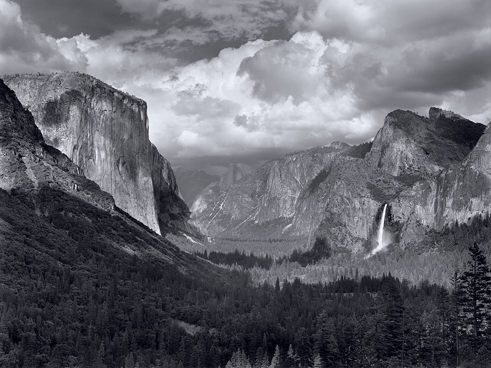
Named by physician L. H. Bunnell (1824-1903) in 1851 after the Yohhe’meti tribe who lived in the valley, Yosemite has been inhabited for 3000 years, and was originally called Ahwahnee. The Yohhe’meti leader Chief Tenaya explained that the name meant “large-mouth,” due to the appearance of the valley like a gaping maw. During the mid-19th century, Europeans waged war on the various tribes inhabiting the area in a bid to extract resources during the California Gold Rush; when the area was mostly cleared of its original inhabitants, loggers and other developers set their sights on extracting the land. A precedent for land-protection, however, had already been set by lobbyists trying to preserve parcels of Western wilderness, and with the designation of Yellowstone as protected parkland in 1872, Sequoia and Yosemite were both next to receive National Park status in 1890.
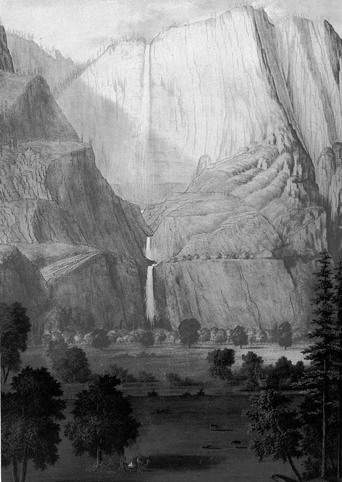
Land protection was aided in no small part by efforts of artists who promoted the beauty of its natural landscape. New Jersey born artist Thomas Almond Ayres (1816-1858) was the first to promote the Yosemite wilderness through his work, after moving to California in 1849 during the Gold Rush. Though Ayres was not successful at prospecting, he began to gain recognition as an artist after venturing into the Yosemite Valley to record the wilderness through sketches in 1855 along with publisher James Hutchings (1820-1902). Ayres exhibited his work in the American Art Union in New York, and published sketches in both Hutchings’ California Magazine and in the Daily Alta California. The lookout point where Ayres sketched the first published artistic rendition of Yosemite is now called Inspiration Point.
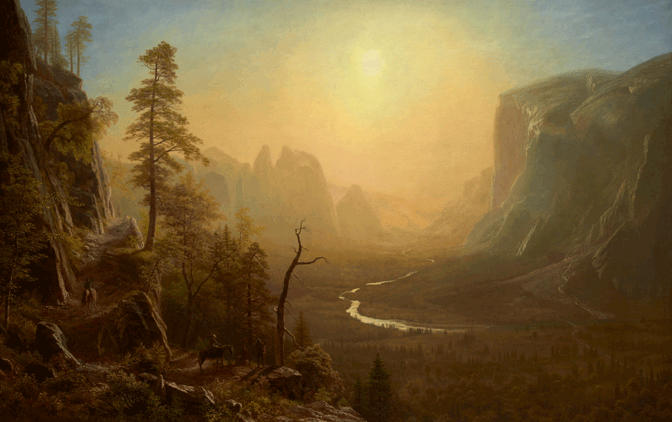
Following Ayres, the more recognizable artwork representing the Yosemite Valley belongs to the second generation of the Hudson River School, a group of artists who subscribed to certain principles of Transcendentalism and Romanticism. Artists of this group often painted scenes of nature in a majestic light, reflecting the philosophical movement of Transcendentalism that emphasized the sublimity of nature. Transcendentalists believed that nature was the source or conduit for spirituality and holistic wellness, and that the conservation and preservation of wilderness is of the utmost concern. As Ralph Waldo Emerson (1803-1882) wrote, “In the woods, we return to reason and faith… I am nothing; I see all; the currents of the Universal Being circulate through me; I am part or particle of God.” The works of Thomas Hill (1829-1908) and Albert Bierstadt (1830-1902) highlighted the unspoken spiritualism in nature, utilising the style of luminism, a technique involving excessive blending of colours on a horizontal plane, so as to give the appearance of softness and glowing light. The technique emulated a sense of holiness, serenity, and calmness, and connoted the worship of nature.
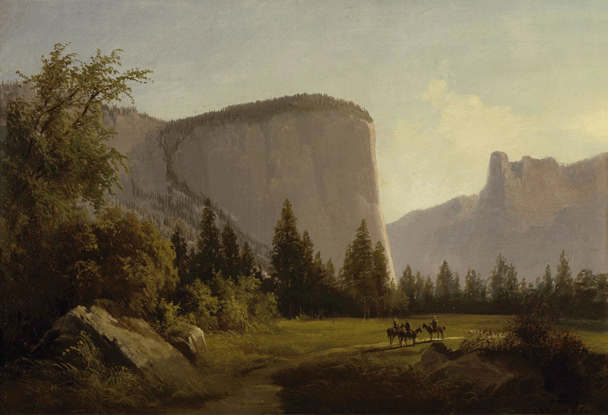
Though Transcendentalism in the early history of the movement drew criticism from both religious and secular groups who believed the ideals to be based in mysticism and irrationality, the art also garnered a remarkable amount of public interest in nature and conservation. A sense of nationalistic pride developed in North America. European immigrants saw the possibilities in a vast, sprawling land of pristine and unique wilderness, and the Romantic ideation of a “call to adventure” and unknown landscape became aligned with images of the wild. The association of the landscape with hope and achievability remains a strong union to this day. In 2015 when Tommy Caldwell and Kevin Jorgeson climbed the Dawn Wall of El Capitan after six years of setting the route, President Barack Obama congratulated them in a Tweet, saying, “You remind us that anything is possible.” Obama is pictured in the Tweet standing in front of Thomas Hill’s Bridal Veil Falls (1895).
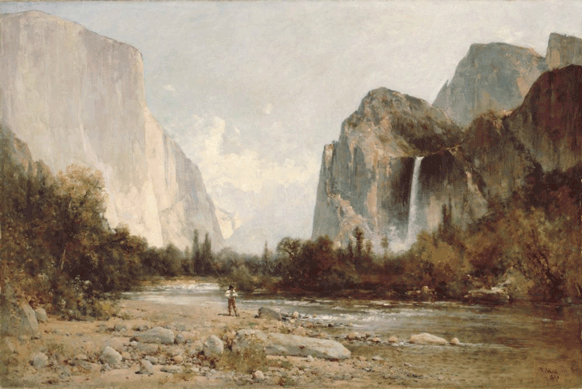

At the turn of the 20th century, photography started to promote new tourism in the valley. The new photo documentation took hold of peoples’ imagination. When George Fiske (1835-1918), one of the earliest Yosemite photographers, captured a scene of Kitty Tatch and Katherine Hazelston – two waitresses at park hotels – dancing on Glacier Point, the photo became one of the first examples of a viral image, with many tourists flocking to the valley to pose in the same manner. Fiske was also the inspiration for legendary photographer Ansel Adams (1902-1984). As a child, Adams saw several of Fiske’s Yosemite photographs in a book, and convinced his parents to vacation in Yosemite in 1916, creating emotional ties with the valley that would last throughout his career. A champion of Fiske’s work, Adams notoriously declared that if it had not been for the bulk of Fiske’s work being destroyed in a warehouse fire, history would have remembered Fiske as one of the top photographers in America.
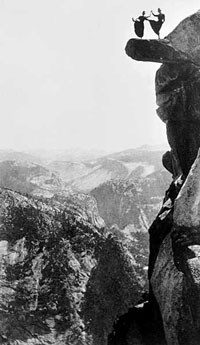
A lifelong environmentalist, Adams joined the Sierra Club at a young age and began selling prints of his Yosemite images in 1921. When Adams assembled his first portfolio called Parmelian Prints of the High Sierras, including Monolith, the Face of Half Dome, his work became subject to great commercial success. Using techniques that he had previously dabbled with, including soft-focus lenses reminiscent of luminism, Adams concentrated on tonal value for dramatic and emotional effects. Some critics consider his image of Half Dome to be a pivotal goal-post in his lifetime’s body of work, citing the extreme contrast as mastery of tonal manipulation in capturing the dark sky against the stark white highlights of the mountains.
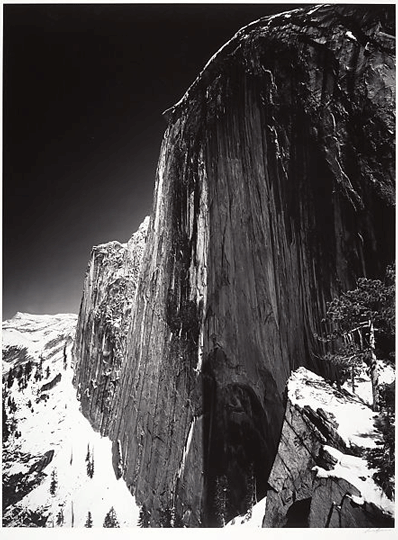
After more than one-hundred years of revolutionary and formative artwork inspired by the valley, both Yosemite has become synonymous with an artistic tradition of its own. Since 1985, Yosemite Renaissance has held an annual group exhibition and contest for artists expressing their visions of Yosemite National Park. Notable examples of the traditional subject matter captured in a contemporary style are Lindsey Fox’s Tenaya Canyon, Claudia Welsh’s Nothing to See Here, Marek Matusz’s Moon and Clouds, and Entropy’s Glory of Wildness. Other contemporary artists like James McGrew, continue the tradition of painting en plein air. As it was in the mid-19th century, the valley is still largely an artist’s playground.
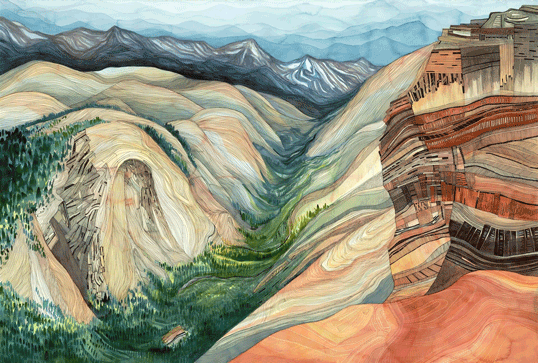
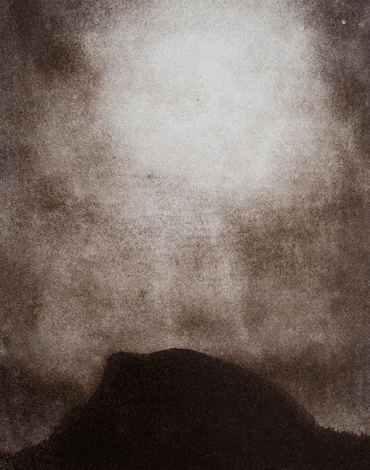
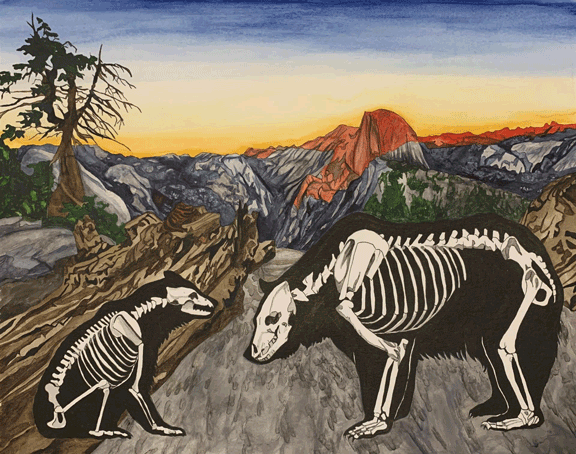
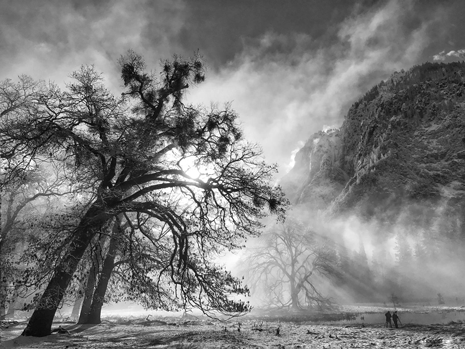
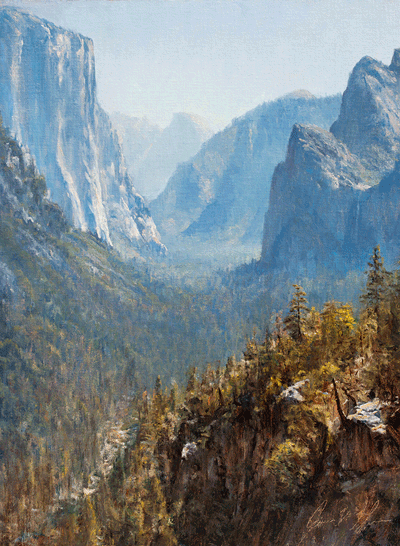
Many adventure photographers and videographers are turning to Yosemite to experiment, pairing the spirit of adventure and ecological advocacy with an artistic practice adapted to 21st-century digital technology. National Geographic photographer and professional climber Jimmy Chin has documented some of the most widely disseminated images of Yosemite in recent times, with a focus on the human figure and the culture of adventure sports in Yosemite.
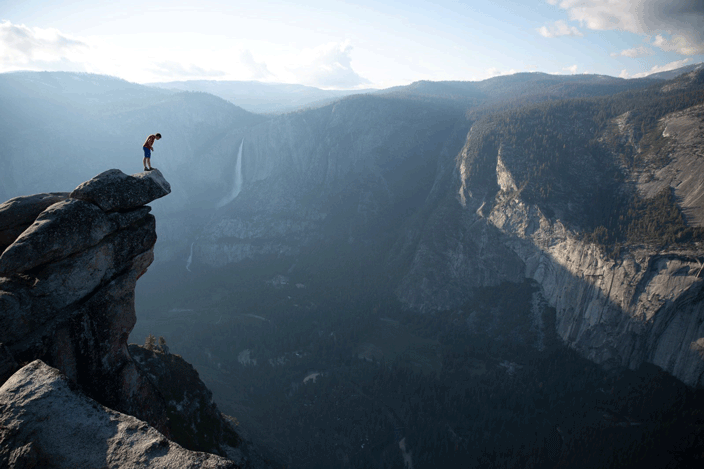
Many of Chin’s images include fellow climbers and are on display in the National Geographic Museum in Washington D.C. In 2019 Elizabeth Chai Vasarhelyi directed Free Solo, a feature film documenting Alex Honnold’s extraordinary climb of El Capitan – Jimmy Chin was the assistant director. Other adventure artists include Renan Ozturk, a multidisciplinary artist working in film, photography, and mixed media, documenting both fellow adventurers as well as traditional views of the landscape. His paintings of Yosemite are reminiscent of Art Nouveau and Expressionism, with a touch of Van Gogh, all in celebration of a lifestyle dedicated to the exploration and preservation of the natural world.
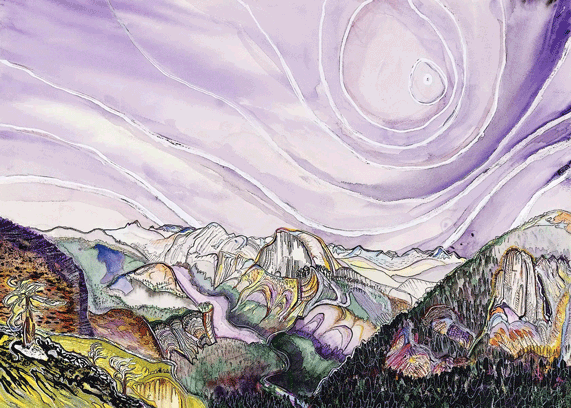
As the art and attraction of Yosemite National Park has evolved throughout the centuries, the risk of overcrowding and privatization of the park looms over the natural landscape. Art can inspire the preservation of wilderness, but it can also invite the masses to treat wilderness areas as trendy hotspots, causing a misuse of resources and destruction of the natural landscape. For more information on how to help in the preservation of Yosemite, please visit the Sierra Club website, or education yourself on best practices for exploring the natural world.
